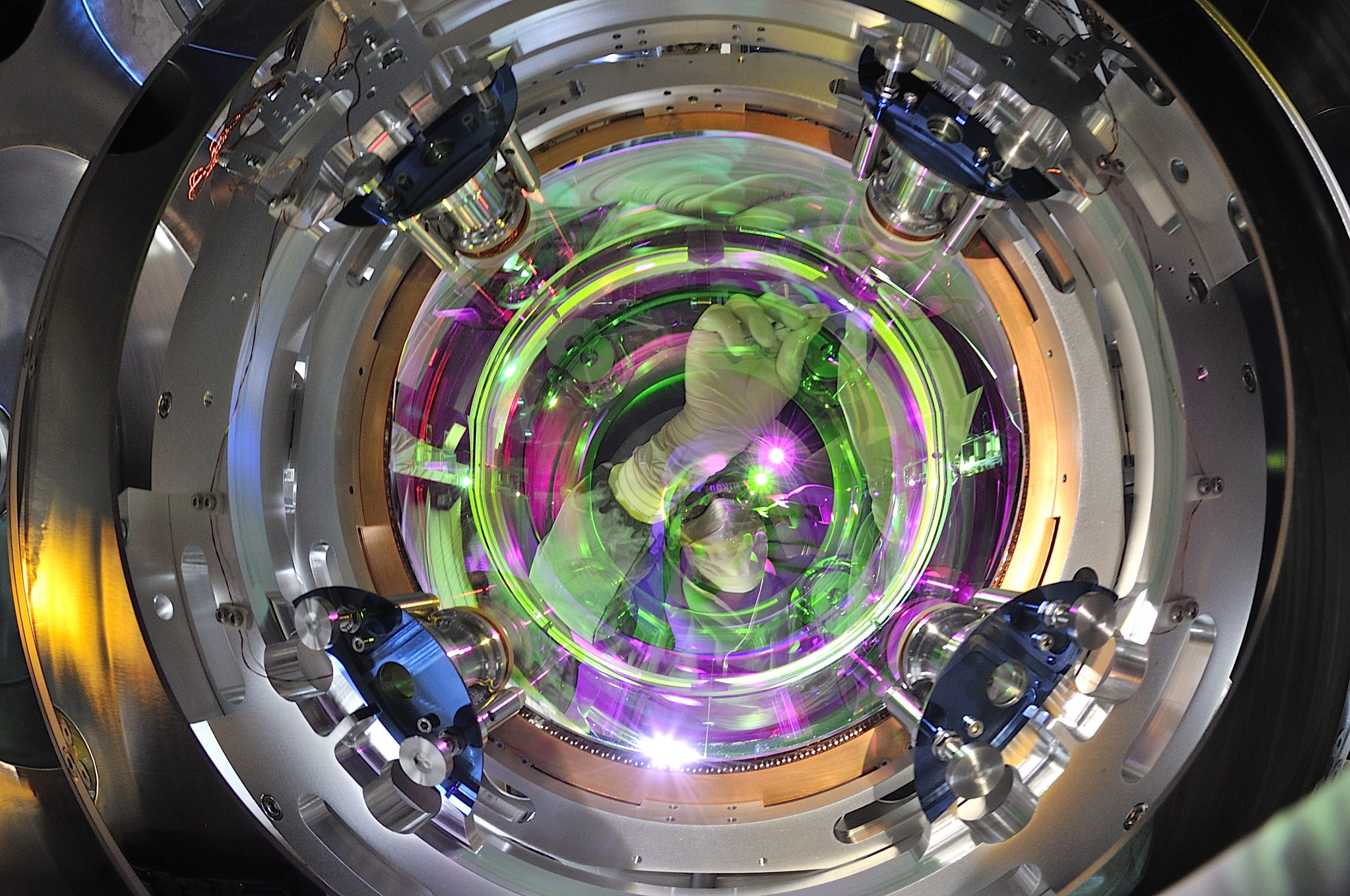Virgo and LIGO join forces for a new year-long signal hunt
Image credit: EGO/Virgo Collaboration/Perciballi
The Virgo and LIGO detectors are ready to start the new Observing run called O3, lasting a whole year. The hunt for gravitational waves is set to start on April 1st when the European Virgo detector, based in Italy at the European Gravitational Observatory (EGO), and the LIGO twin detectors, located in the state of Washington and Louisiana (USA), will start to take data becoming together the most sensitive gravitational wave observatory to date. During a one-year period the LIGO and Virgo Collaborations will register science data continuously, and the three detectors will operate as a global observatory.
“With respect to the second observation period O2, the Virgo sensitivity has improved by about a factor of 2, which means that the volume of the observable Universe has increased by a factor of 8”, says Alessio Rocchi, researcher at INFN and Virgo’s commissioning coordinator.
“The quality of the data collected by the instruments is a determining factor to detect gravitational-wave signals buried into noise and to measure their properties”, said Nicolas Arnaud, CNRS researcher currently seconded to EGO and Virgo detector characterization coordinator. “A lot of progress has been made in that direction since O2, thanks to the combined effort of the collaboration as a whole, from the instrumentalists to the data analysts”.
The scientific output of O3 is expected to be tremendous and it will potentially reveal new exciting signals coming form new sources such as the merger of mixed binaries made by a black hole and a neutron star. The O3 run will also target long lasting gravitational waves produced for instance by spinning neutron stars which are not symmetric with respect to their axis; however, the detection of such signals is still an enormous challenge and the LIGO and Virgo Collaborations are raising up to it. Furthermore, signals for the merger of binary black holes are expected to become quite common, perhaps up to one per week. Scientists also expect to observe several binary neutron star mergers.
“The new software we have built is able to send Open Public Alerts within five minutes”, says Sarah Antier, postdoc at the Université Paris Diderot and responsible of the low latency program for the Virgo Collaboration. “This will allow to follow-up the gravitational wave signal with neutrino and/or electromagnetic searches, that may lead to multimessenger discoveries. Observations of many signals as we expect during O3 will give us a census of the population of stellar mass remnants and a better understanding of the violent Universe.”
Since August 2017 both LIGO and Virgo have been updated and tested. In particular Virgo has fully replaced the steel wires which were used in O2 to suspend the four main mirrors of the 3 km long interferometer: the mirrors are now suspended with thin fused-silica (‘glass’) fibres, a procedure which has allowed to increase the sensitivity in the low-medium frequency region, and has a dramatic impact in the capabilities to detect mergers of compact binary systems. A second major upgrade was the installation of a more powerful laser source, which improves the sensitivity at high frequencies. Last but not least squeezed vacuum states are now injected into Advanced Virgo, thanks to a collaboration with the Albert Einstein Institute in Hannover, Germany. This technique takes advantage of the quantum nature of light and improves the sensitivity at high frequencies.

